What are fish peppers? They seem to be growing in popularity in some American cultures, but they have a rocky and intriguing history. The fish pepper is a spicy chili variety within the Capsicum annuum species.
They are slightly hotter than a jalapeño pepper, but much less intense than a habanero. Perhaps the most fascinating thing about fish peppers, besides their beautiful striped appearance, is their origin and history in North America.
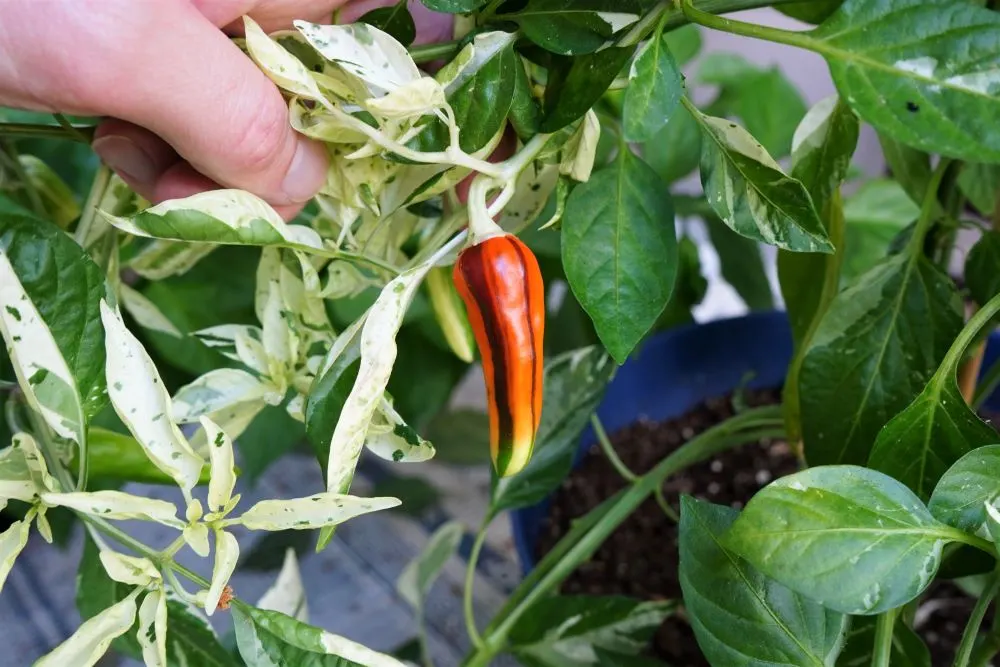
| Name | Fish pepper |
| Type | Heirloom (open pollinated) |
| Species | Capsicum annuum |
| Heat Level (Scoville) | 5,000-30,000 SHUs |
| Flavor | Vegetal unripe, sweet when ripe |
| Color | Striped (white, green, orange, brown, red) |
| Uses | Seafood, sauces, hot pepper powder and spices |
| Light | Full sun or afternoon shade |
| Watering | Evenly moist, good drainage |
| Seeds | Bohica Pepper Hut or Burpee |
The fact that this heirloom variety survived to this day is a small miracle! In this article, we will share everything to know about the fish pepper.
Skip Ahead:
- The amazing history
- Characteristics
- Fish Pepper Scoville and spiciness
- Other ornamental peppers
- Growing Fish peppers
- Uses & cooking
History Of The Fish Pepper
The fish pepper is thought to have its origins in the Caribbean. It then made its way into North America and was first documented in the early 1800s along the East Coast. The pepper was named from the cuisine in which it was primarily used, seafood dishes.
The fish pepper was passed down through generations and was likely cultivated by African-American slaves during the 19th century. The pepper became popular in the Mid-Atlantic region, especially in Baltimore.
While the region became more urban, the fish pepper began to lose popularity. It was nearly lost altogether but was saved by a painter named Horace Pippin, who traded rare seeds.
It is a small miracle that the fish pepper is still available at all, but it is making a strong comeback across North America. The fact that it is now available to grow is a testament to the importance of saving seeds. The rich history of the fish pepper can now be carried on through countless future generations.
Characteristics Of Fish Peppers
Aside from their amazing history, perhaps the most fascinating thing about fish peppers is the plant’s appearance. Unlike most pepper varieties, the fish pepper plant has variegated leaves with stripes of white and green.

The pepper pods themselves go through a multitude of color variations during maturation. The peppers start off milky white, turning to striped green and white, then to green, orange, brown, and finally red.
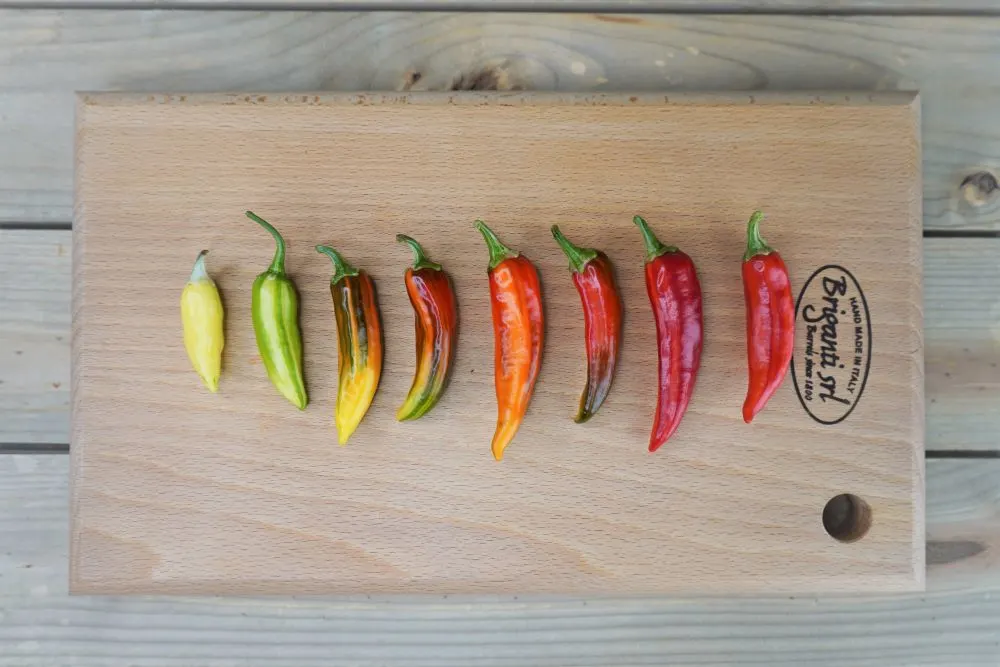
Since young fruits are white in color, fish peppers were commonly used to spice up white sauces. Given that the dark red mature pods would ugly the sauce, the white peppers were highly valued in high-quality cream sauces.
Fish Pepper Scoville Scale Rating
The fish pepper was derived from a typical serrano pepper and has a similar heat level. If you are familiar with jalapeños, then consider this one step up in heat level.
To put it simply, fish peppers range from 5,000-30,000 SHUs on the Scoville scale. This places the pepper between the jalapeño and the serrano pepper for heat.
Tip: Always be sure you use gloves when slicing or preparing fish peppers. Small amounts of spicy pepper juices can cause hours of irritation to the skin and eyes!
Other Ornamental Pepper Varieties
Since the fish pepper is such a beautiful plant, many gardeners enjoy pairing them with other ornamental pepper varieties. These pepper types will bring lots of color to your home garden, as well as flavor!
Black Pearl Pepper
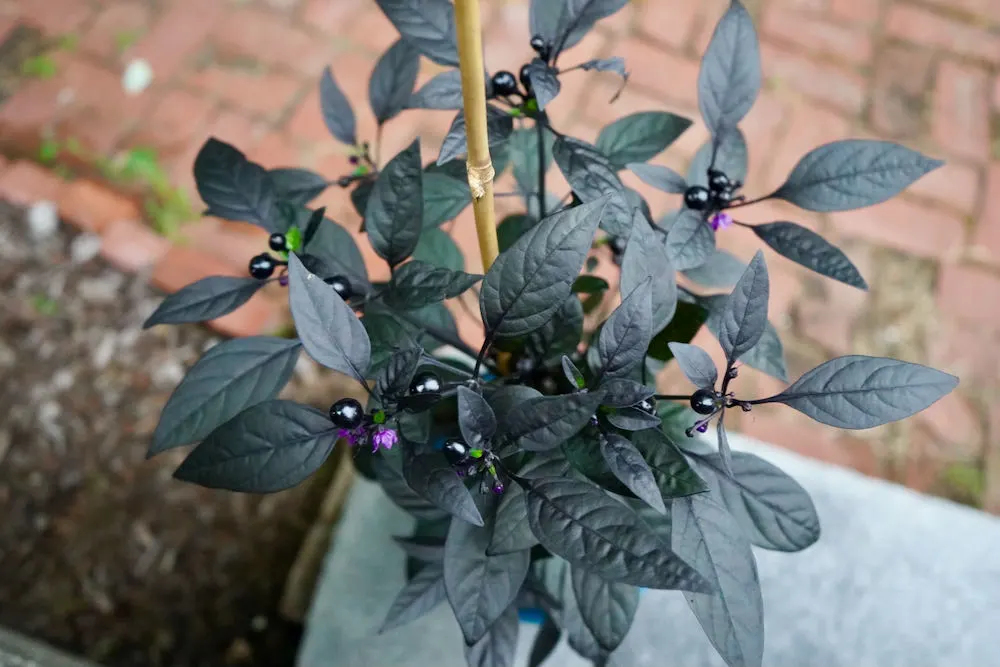
If you didn’t know, some peppers have dark purple, almost black foliage. One such variety is the black pearl pepper, producing jet-black leaves and fruits, along with dazzling purple flowers. Eventually the tiny peppers ripen to a deep red and have a surprisingly sweet and spicy kick. Get seeds here.
Chinese Five Color Peppers

Grow these to put some interesting color into your garden. You’ll see pale yellows, reds, oranges, and deep purple peppers, all at once on these gorgeous plants. Similar in heat to the fish pepper, the Chinese 5-color pepper will spice up your food and your garden! Get seeds here.
Jigsaw Peppers
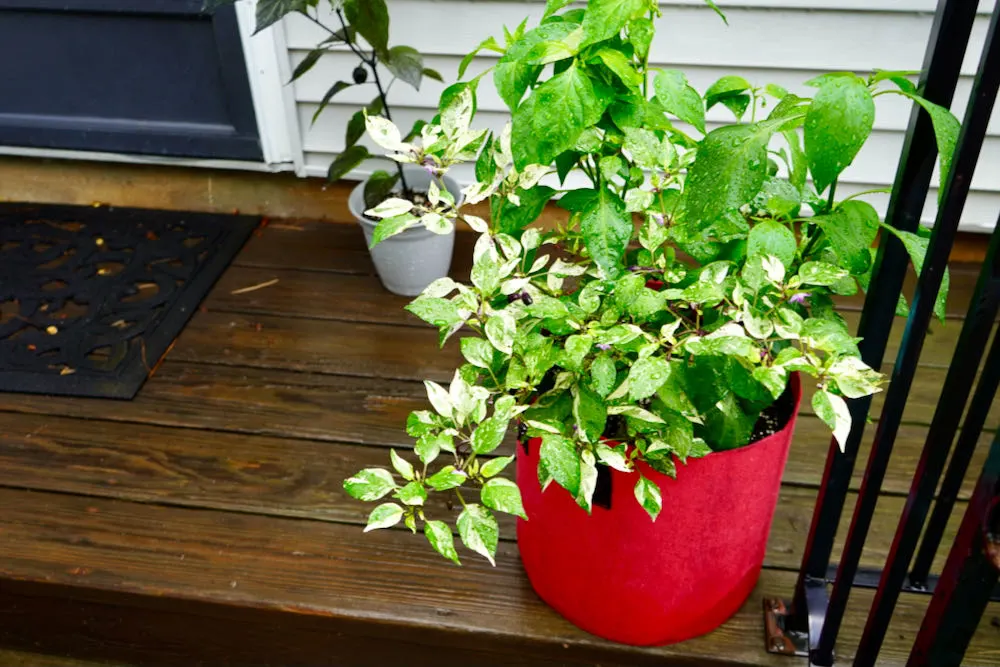
Mostly used for purely ornamental purposes, the Jigsaw is a beautiful pepper plant. With variegated purple, white and green leaves, this plant is stunning in any vegetable garden! The peppers also ripen from a deep purple color through many striped combinations to a final rich red color. Edible and spicy.
Growing Fish Peppers
Growing the fish pepper is as simple as growing any other pepper variety. If you have grown jalapeños or Bell peppers before, you will have no trouble growing Fish peppers. They are ideally suited for container planting.
- Get some fish pepper seeds here
- Pepper growing guide
In early spring, plant your fish pepper seeds indoors about 4-6 weeks before the last frost date. For example, here in zone 6, we plant our seeds around late March or early April.
Once the threat of frost is gone, transplant your seedlings outdoors into containers or garden beds. The plants may benefit from staking, though in our experience fish peppers are short and bushy, holding up well on their own.
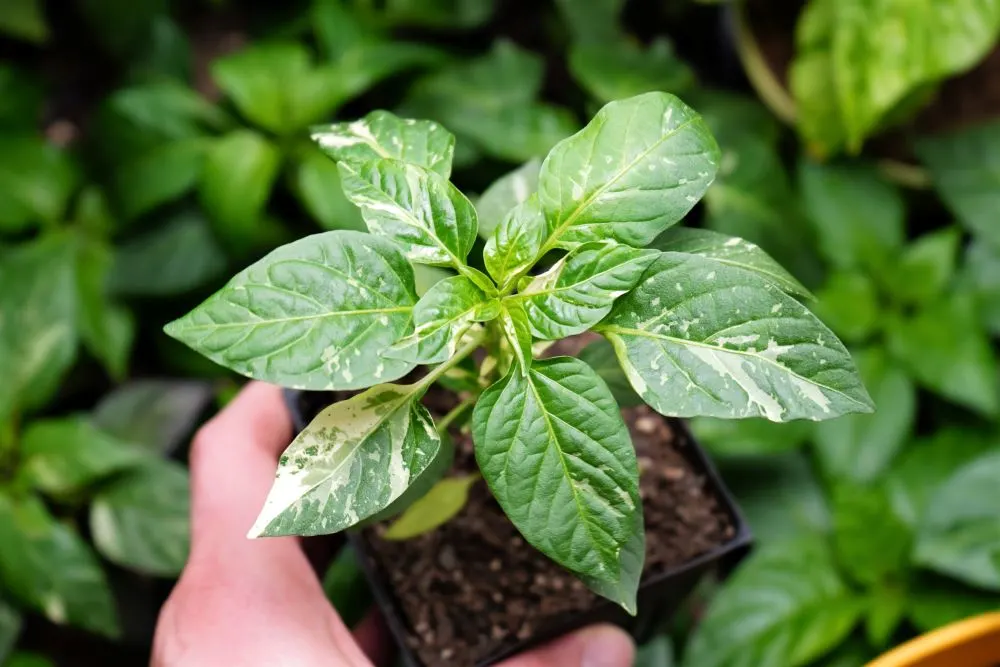
Note: There is no need to prune fish peppers. This variety naturally grows bushy and thrives in full sun conditions.
How long until fish peppers are ripe?
Fish peppers are typically harvested mid-season about 70-80 days after transplanting. This makes them one of the earlier varieties of hot peppers and will continue to produce well into the late season. Be sure to start your fish pepper seeds indoors to ensure an ideal harvest!
And of course, don’t forget to save your seeds and share them with other gardening friends to keep the fish pepper alive and well!
How To Use Fish Peppers
Fish peppers are a great culinary addition to many meals. Try implementing this historic pepper into crab gumbo or oysters. These are some of the classic dishes that were so well received in the Baltimore region in the late 1800s.
Some of our other favorite ways to preserve and use hot peppers include:
I hope this article helped you learn more about the amazing fish pepper plant. If you have any original recipes that use the fish pepper, please share them in the comments below!


shawn michael
Sunday 15th of August 2021
Thank you for this wonderful info! I got my 'hot fish' peppers (so they called them here) by mistake when I ordered some plants from our local Matthaei Botanical garden in ann arbor, mi. I LOVED the variegation and thought it was a rare accident ~ want to learn more about variegation control/manipulation(?) ~ so, I was happy to learn that it is what the Fish Pepper does AND that it tastes wonderful. I will definitely be growing a lot more Fish peppers and adding it to my ridiculous seed collection!!! Thank you
David Niemi
Wednesday 26th of May 2021
A note on ornamental peppers -- every species of pepper is edible, and even ornamentals can be nice to eat -- but that is not what they are bred for. Many ornamentals have small fruits with too many seeds, as they are not optimized for eating. Fish peppers are really seasoning peppers -- they taste great for their intended use, but are not as exciting to eat straight as some other varieties. Both the taste and spiciness increase if you wait until they turn fully red, but that can take a long time.
Karen Garay
Saturday 26th of September 2020
I love fish peppers! I got some a couple years ago from Ohio Heirloom Seeds because I love growing native heirloom varieties of plants. They are super prolific in my organic community garden plot, and beautiful to look at. (I live in the Chesapeake bay area.) I also like to add native tomatoes like the Brandywine or Cherokee families in my salsas and hot sauces.
Jacob Jones
Saturday 19th of September 2020
I bought a Fish Pepper from an heirloom tomatoe and pepper lady here in N.E. Oklahoma. They are such an incredible pepper from flavor, color, and history. And yup it really goes nice with seafood. If you ever find some for sale, buy some!
peppergeek
Thursday 24th of September 2020
Hi Jacob,
Awesome! They're great little peppers, we'd love to cross them with other varieties to see what other variations we can get.
-Calvin